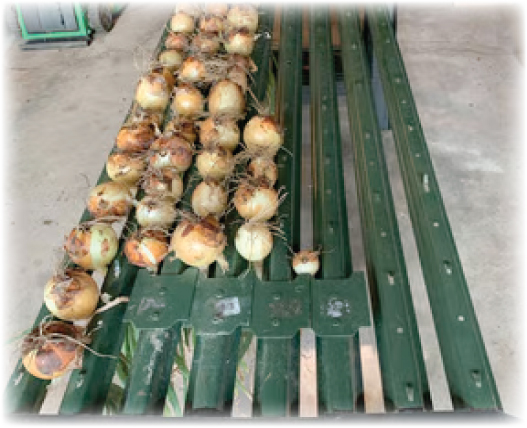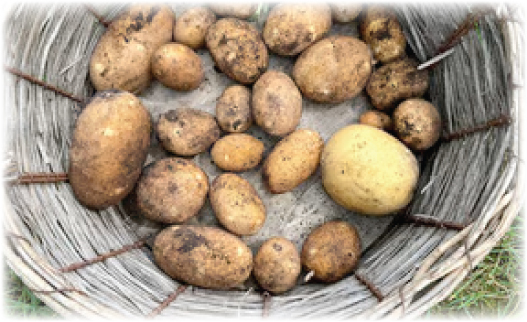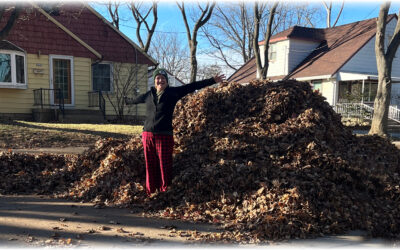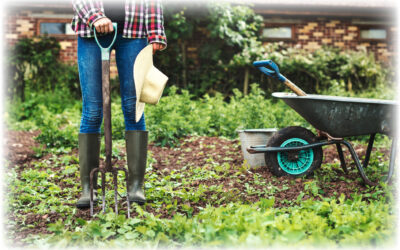Curing
Curing is a method that has been used for thousands of years as a way to preserve food. The process of curing dries out the vegetables so that they will store longer.
Harvesting and Curing Potatoes, Onions and Garlic
When your potatoes, onions and garlic are reading to harvest, curing them is an important step in preserving your harvest. There are many ways to do this, but we will talk about what we have done and what has worked for us. If you have any great tips for storing your crops, let us know in the comments below!
Garlic
Garlic is such a great crop to grow. You plant it in the fall and basically forget about it until you harvest it next summer. But when is the right time to harvest?
The easiest way is to look at the leaves. When about 1/3 of them are brown you can check the bulbs to see if they are the right size,. Loosen the dirt around a couple of bulbs and check to see if they are a good size. To harvest them gently dig around them carefully to get them out of the ground – do not pull them up by their leaves or you might break them off. You can use the garlic right away, but for longer storage they must be cured.
Next brush most of the dirt off the roots and cure them for a couple of weeks in a ventilated area out of the sun. As you can see, I cure them on my seed racks in my laundry room. In the summer I have to run a dehumidifier in my basement and I also have a fan running.
After a couple of weeks you can cut the roots and stems off and store them as you usually would. Now you are ready to enjoy your garlic through the coming year.



Onions
Onions are another crop that must be cured, or dried for long-term storage. Like garlic, you can use the onions right away, but the others must be dried before long-term storage. When cured properly, and depending on the variety of onions, they can last up to a year! There are long-day onions – better in the colder climates – and short-day onions more suited to the warmer, more southern climates. Look up your onion variety to see how long it will store for. The ones with the lowest storage time should be used up first.
Onions are ready to harvest when the tops naturally fall over and turn brown. Megan Cain from the Creative Vegetable Gardener says she might even harvest them all when at least 25% of her onion leaves haves fallen over. Carefully pull or dig them up and gently shake off any excess soil. These should not be washed. Dry then in a well-ventilated area, either on a screen or fencing, out of the sun, like a porch or garage. The goal is to get that paper protective layer around the onions.
Here you can see that I created a rack for my onions by placing garden stakes on two saw horses and letting the onions dry that way. You do not want to dry or store them in a damp area or they may rot. After a few weeks they will be ready for long-term storage as you would usually store onions.
Your onions can also be stored in the refrigerator.
Potatoes
Potatoes are one of those root crops that everyone should grow! Along with the great number of varieties there are almost unlimited ways to cook and store them, but we will talk about curing them for long-term storage here.
Potatoes like the two crops above, should also not be washed while curing them. Cure the potatoes by keeping them in a well-ventilated dark area for 7-10 days. After curing they can be washed and completely dried before storing in a cool area with a higher humidity as potatoes are about 80% water. If they are stored in a too-dry area they will shrivel up. Refrigerating potatoes is not recommended as the too-cold temperature tend to turn the starch to sugar. Make sure you only store non-diseased, healthy tubers for storage. If you have some blemished potatoes, you can cut out the defective areas and use them right away.
Keeping your potatoes out of direct sunlight is very important. Ever see potatoes at the store with a green tinge to them? That means that the potato was exposed to sunlight. The green color is harmless chlorophyll but is usually accompanied by a toxic alkaloid called solanine. While small amounts of solanine are usually harmless, larger amounts can cause stomach distress and illness. Solanine is not deactivated by cooking so it is best to avoid any of the green parts. If only a small part of the potato has green on it, you can cut it out.







